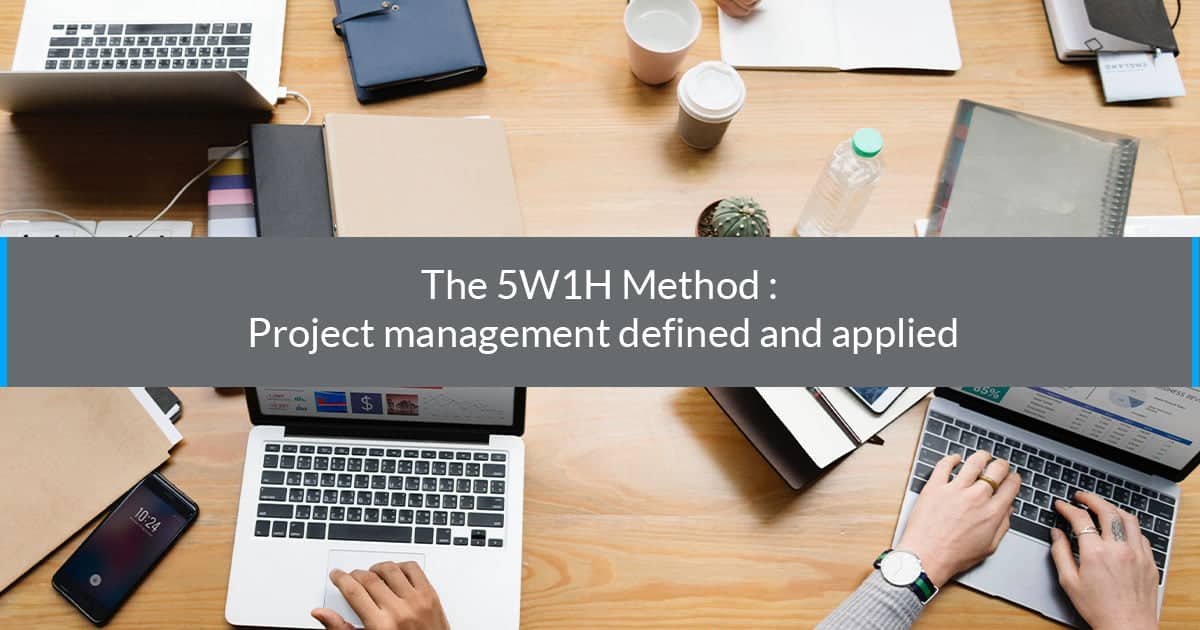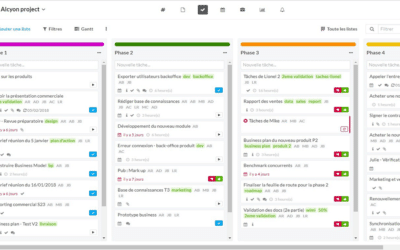At work, it is important to ask the right questions. In every situation, you should understand and evaluate each context, objectives and constraints. This detailed analysis of each fact allows you to approach a problem in the best possible way.
In order to achieve this methodical thinking, you should use this simple, reliable and versatile tool: the 5W1H method.
Discover this method as well as analysing 4 examples of its application during project management.
Definition
Otherwise known as the questioning method or the method of the Five Ws, 5W1H is an acronym in which every letter corresponds to a question: what, who, where, when, how and Why.
This technique allows you to understand a situation, to discern a problem by analysing all the aspects. As outlined by Jean-Pierre Giraud, on the blog The big sales techniques : “The 5W1H method allows you to discern the information needed to better understand, encompass, clarify, structure, frame a situation; as this way of thinking allows you to explore all the dimensions from different perspectives”.
This tool is very popular amongst journalists whilst also being used and applied to different contexts. It will help you ask the right questions, expand your enquiry and obtain the right information, which in turn helps you find the best solutions. This method allows you to guide all your team members and to gather all the factual elements needed for a complete and objective understanding.
4 Examples of its application during project management:
The 5W1H method is popular, simple and easy to use. It may be used in various situations. Here are a few examples.
1. To define your project
Before starting a project, it helps to be organised and above all, to know all the details of the project.
This questioning method is a useful tool to define all the aspects of a project before starting.
- What?: What is the project? What are the objectives?
- Who?: Who is the client? Who are the users? Who are the members of the team ?
- Where?: Where will the project take place?
- When?: What is the date of the consignment? When will it start? How long will it last?
- How:? Which financial, HR and technical means have been put in place to create the project? By what means will you progress?
- How many?: What budget do you have at your disposal? What are the delays in the realisation?
- Why: Why has the project been started? What are the reasons? What is the goal?
2. To solve a problem
The 5W1H method is an irreplaceable problem resolution tool because this allows you to understand a potentially problematic situation by asking the right questions.
- What: description of the problem;
- Who: the responsible parties;
- Where: the location of the problem;
- When: temporal characteristics of the problem (at what point in time, how often)
- How: the effects of the problem?
- Why: reasons, cause of the problems?
3. Leading a meeting or a brainstorm
In order to increase productivity, meetings (just like brainstorms) should be prepared, have an objective, an agenda and be organised. If they are not structured correctly, a meeting can rapidly loose all sense and drag on, becoming time consuming and completely unproductive.
The questioning method allows you to precisely define the subject of the meeting. You can also send an invitation to all participants. Furthermore, each participant has the same information (delays, who does what, what are the priorities, etc) and concentrate on the objective of the meeting. You avoid losing time with useless questions and you directly address the point.
The 5W1H method is also very useful when taking meeting minutes.
4. Integrating a communication or marketing strategy
In project management, like in many other sectors, communication is key for effective and successful collaboration. The 5W1H method is very useful in marketing and in communication by helping you determine the type of action plan that should be put in place.
Essentially, this type of tool allows you to define:
- What: What is your problem? What are the products and services you will use to communicate?
- Who: Who are your targets? To whom will you communicate? Which members of your team will oversee various jobs?
- Where: Where will you obtain the information you need? Where are the places you would like to communicate?
- When: How often would you communicate? What is your schedule?
- How: What are the means of communication that you are going to put in place (web site, social media, events, brochures, etc)?
- Why: What are the benefits of the products/services on which you are communicating? What is the objective of this communication strategy?
Conclusion
Very popular amongst journalists, 5W1H method allows you to structure your thoughts and to ask essential questions in order to decipher a situation. In terms of project management, this is an irreplaceable tool which may be used in multiple contexts: establishing a communication plan, defining a project, or even crisis management.









